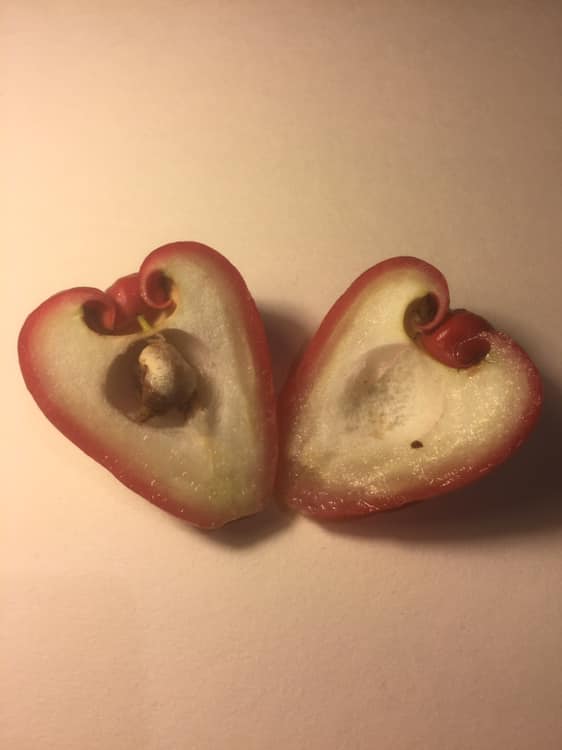Wax jambu
Myrtaceae
Wax jambu, or Syzygium samarangense: three and a half stars for what is usually a three and a half star fruit. Today, we continue our survey of fruits of the Myrtaceae family with this Southeast Asian fruit. Like the lillipilli (Syzygium australe), the fruit of the wax jambu is tart and crisp, though the jambu is larger and less sweet. The jambu is pear-shaped, and a little smaller than an average pear. The skin has a eucalyptus taste, while the flesh is refreshingly bland.
We bought this specimen from a greengrocer in Cabramatta in south-west Sydney. At the time we did not know what it was, and the ship’s botanist thought it might have been a cashew apple (sans cashew). After dissecting the specimen, we were able to discern its true nature.

We had left the old capital in our chartered boat, the Liquamen, and had followed the river east to the sea. The weather had been fair for the past week, and I had now grown accustomed to the boat’s movement.
Henry Erstwhile, the toothbrush tycoon turned ship’s astrologist, was fishing from the deck.
“Tally how are the stars, Henry,” I asked, slipping back effortlessly into the nautical vernacular learnt from the hours spent on my CB radio as a wee.
“Tally how your foot – Mercury is rising in Pisces.” He kicked the bucket next to him and its contents spilled out onto the deck, allowing a few herring and cod to flap about in relative freedom.
I picked up one of the herring and walked over to the fish chute. The hand with which I was handling the fish was covered in a sticky, transparent scum. I deposited the herring into the chute and down it tumbled, into the depths of the fish processor’s fermentation tanks. There the fish would spend several days decomposing, aided by the heat from the sun and a strange biotic soup. Then the result would be pressed, dried, and burnt to produce electric power and propulsion, as well as producing a black, acrid smoke with more than trace amounts of formaldehyde, arsenic, lead, cadmium, chlorine, and whatever other contaminants that had bubbled their way up the ecosystem to bioaccumulate in this creature.